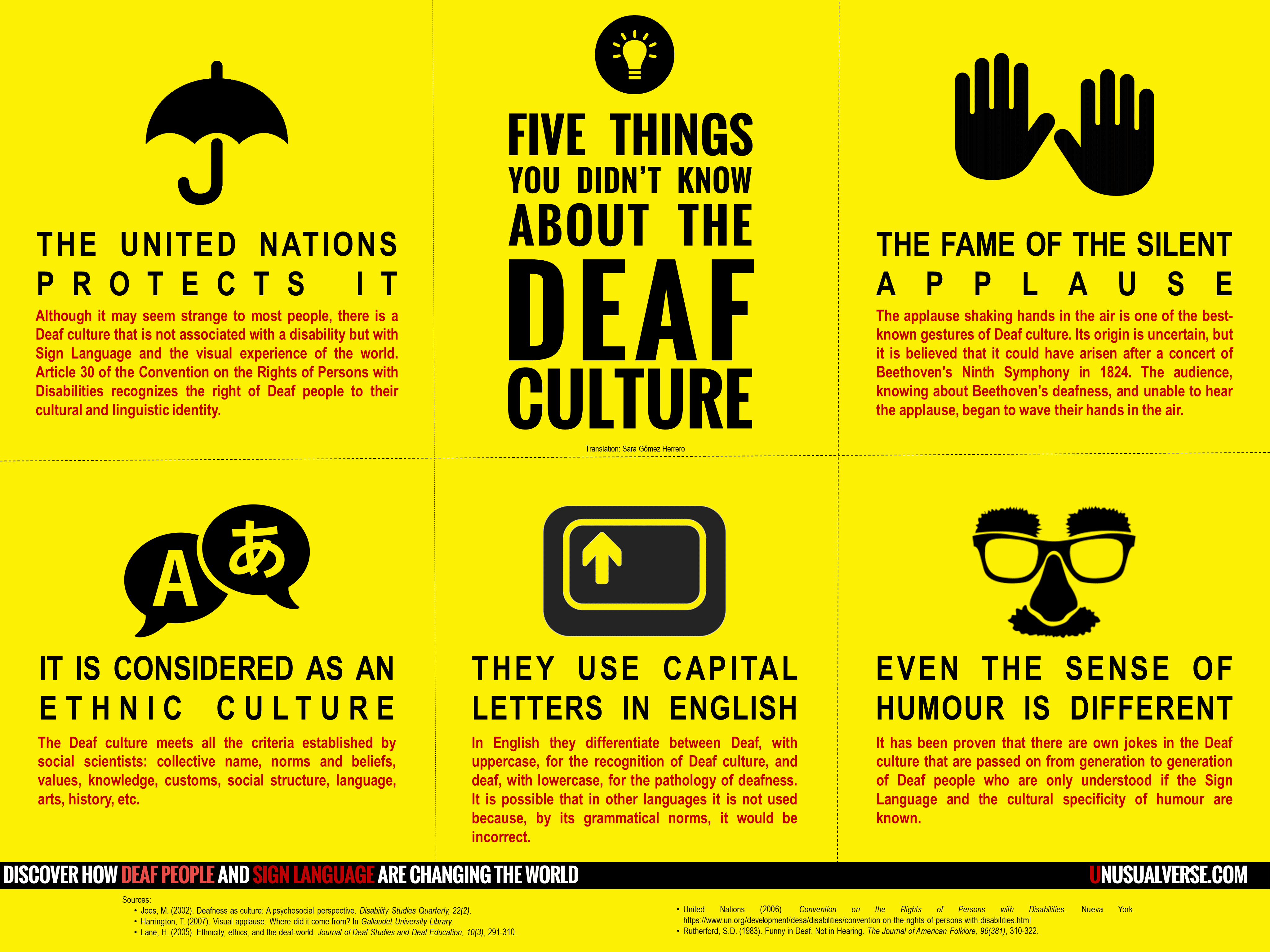Transcription for people with low vision or blindness:
THE UNITED NATIONS PROTECTS IT
Although it may seem strange to most people, there is a Deaf culture that is
not associated with a disability but with Sign Language and the visual
experience of the world. Article 30 of the Convention on the Rights of
Persons with Disabilities recognizes the right of Deaf people to their
cultural and linguistic identity.
IT IS CONSIDERED AS AN ETHNIC CULTURE
The Deaf culture meets all the criteria established by social scientists:
collective name, norms and beliefs, values, knowledge, customs, social
structure, language, arts, history, etc.
THEY USE CAPITAL LETTERS IN ENGLISH
In English they differentiate between Deaf, with uppercase, for the
recognition of Deaf culture, and deaf, with lowercase, for the pathology of
deafness. It is possible that in other languages it is not used because, by
its grammatical norms, it would be incorrect.
THE FAME OF THE SILENT APPLAUSE
The applause shaking hands in the air is one of the best-known gestures of
Deaf culture. Its origin is uncertain, but it is believed that it could have
arisen after a concert of Beethoven's Ninth Symphony in 1824. The audience,
knowing about Beethoven's deafness, and unable to hear the applause, began
to wave their hands in the air.
EVEN THE SENSE OF HUMOUR IS DIFFERENT
It has been proven that there are own jokes in the Deaf culture that are
passed on from generation to generation of Deaf people who are only
understood if the Sign Language and the cultural specificity of humour are
known.
Sources:
- Joes, M. (2002). Deafness as culture: A psychosocial perspective. Disability Studies Quarterly, 22(2).
- Harrington, T. (2007). Visual applause: Where did it come from? In Gallaudet University Library.
- Lane, H. (2005). Ethnicity, ethics, and the deaf-world. Journal of Deaf Studies and Deaf Education, 10(3), 291-310.
- United Nations (2006). Convention on the Rights of Persons with Disabilities. Nueva York. https://www.un.org/development/desa/disabilities/convention-on-the-rights-of-persons-with-disabilities.html
- Rutherford, S.D. (1983). Funny in Deaf. Not in Hearing. The Journal of American Folklore, 96(381), 310-322.













